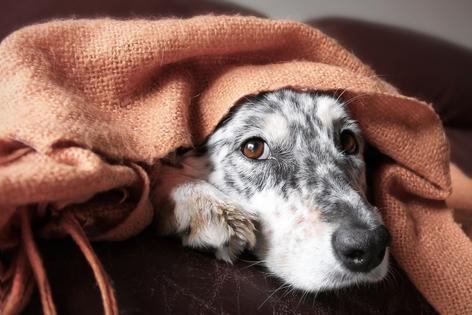My Pet World: Wind phobia is a real problem for some dogs
Dear Cathy,
We rescued Mikey in July 2019 from a shelter in southern Illinois. We moved into our forever home in Tucson, Arizona, this past September. He first had trouble getting around on the tile floors, but about a month ago, he became afraid of almost everything. He is 4 years old and weighs about 60 pounds, so he's not a small dog. He is afraid to go into our kitchen. Our kitchen has windows on two sides. I don't know if he sees a reflection in the window or there’s something outside he's afraid of, but he won't drink or eat in the kitchen anymore. I tried to bring his food into another room, but he wouldn't touch it. I am now holding his dish in the family room so he eats. Still, he gets so scared if the wind blows that he jumps on my lap or on top of us during the night. Someone suggested a Thundershirt. Another friend said to give him pills. I don’t like either solution. Do you have any suggestions? – Kay & Terry McCollom, Tucson, Arizona
Dear Kay and Terry,
When we think of dog phobias, we mostly think of their fear of fireworks or thunderstorms. But dogs can develop all sorts of phobias, and wind phobia is definitely something for dogs who are sensitive to sound.
Dogs with phobias don’t always get over their phobias, but you can help Mikey manage his fears by reducing his triggers. With wind, it’s the sound, so put on TV, play some music or turn on a sound machine, especially in the kitchen, to block it out. If you think the window bothers him, keep the blinds partially closed or use sheers to allow light in but block any view or reflection.
You also can reduce his anxiety by diffusing an essential oil like lavender in your home or trying a canine pheromone collar or plug-in pheromones around the house. Melatonin is sometimes used for storm phobias and might work here. Talk to your vet about the proper dosage for your dog.
A Thundershirt or Anxiety Wrap can help with phobias. He may not need to wear it all the time, but if he does, it’s a natural way of handling this problem.
It takes time to find the right combination of strategies for your dog. If all else fails, your last resort is medication. If nothing else works and it improves his quality of life — and yours — then it’s worth trying.
Always reward him with treats whenever he gets anywhere near the kitchen, and slowly start moving his food dish from the family room to the kitchen a few inches at a time. If you can calm his surroundings and reduce the triggers that lead to these anxious behaviors, he may eventually feel safe in the kitchen again.
Dear Cathy,
...continued
(c) 2021 DISTRIBUTED BY TRIBUNE MEDIA SERVICES, INC.










